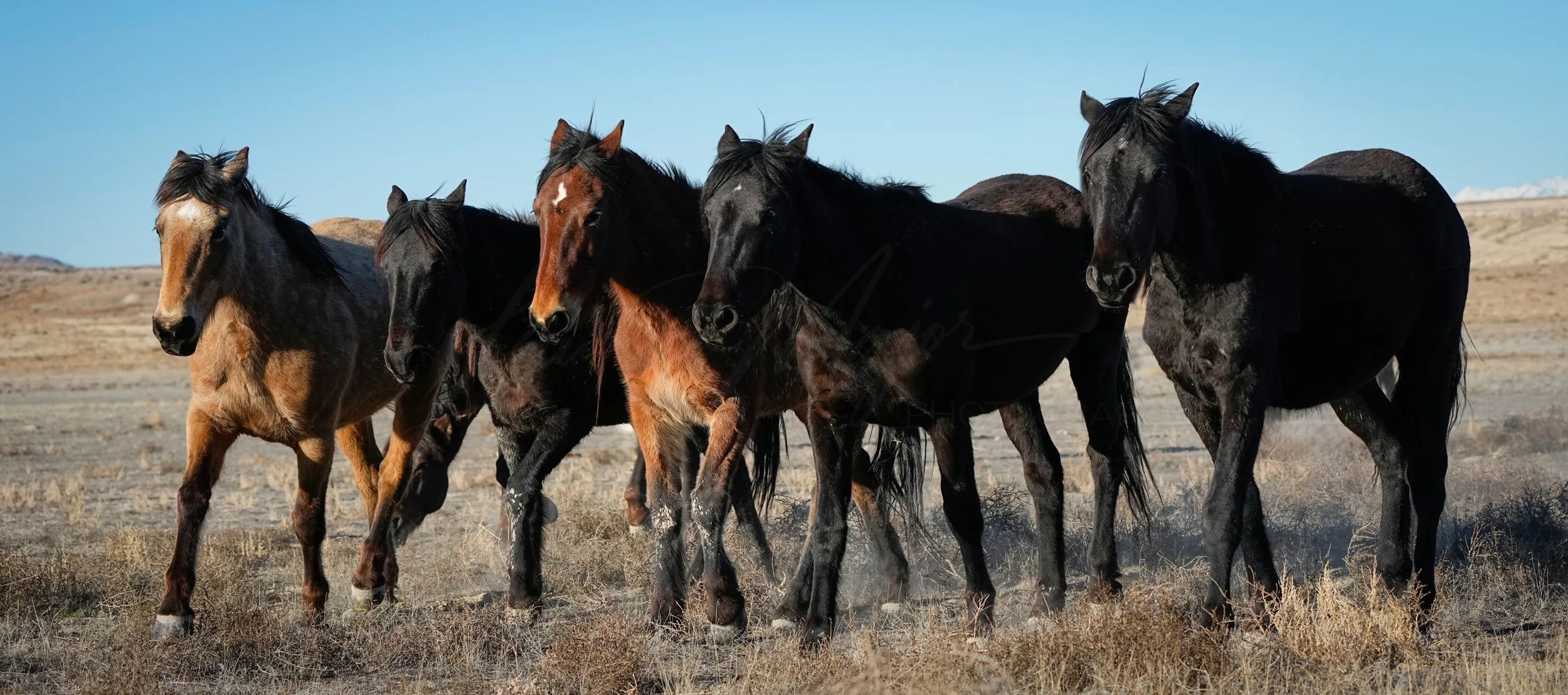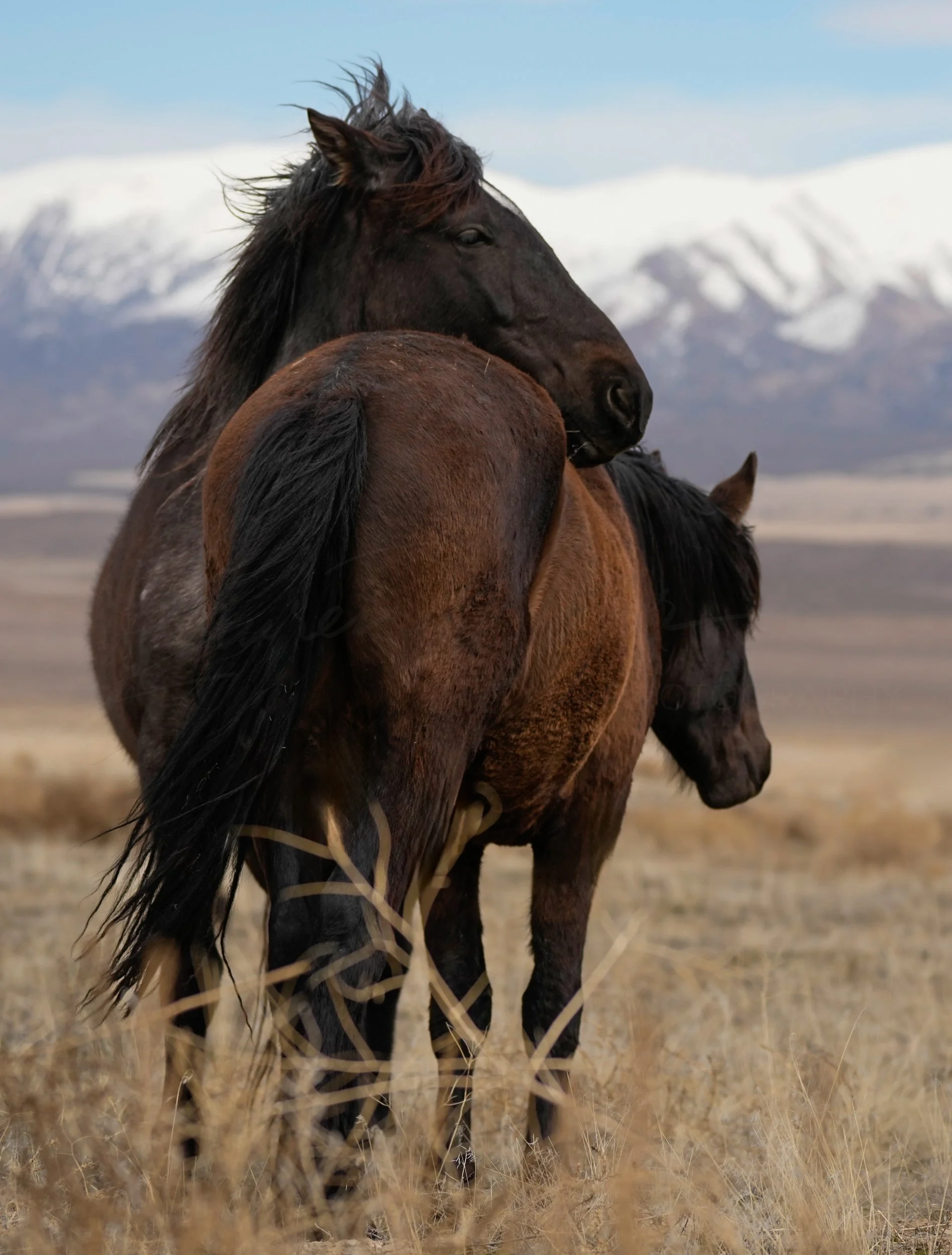Ranchers vs Mustangs
Walking The Line of Fertility & Roundups - Onaqui Wild Mustangs of Utah
In the summer of 2019, the Bureau of Land Management (BLM) announced plans to remove more than half of the wild horses residing near Utah's Onaqui mountains. This decision reflected a larger effort to address the growing population of wild horses across the American West in recent years.
As the wild horse populations continue to surge to record levels in the Mountain West, ranchers are advocating for these roundups as they argue that with no natural predators, wild horses compete with cattle and sheep for vital resources such as grass on public lands. They argue that the unchecked growth of wild horse populations poses a direct threat to ranchers' livelihoods, as they rely on these lands for grazing their livestock.
Onaqui Wild Mustangs
As my rented Jeep crests over a hill, I spot a group of about 100 grazing mustangs. As I pull over the vehicle a couple of foals wrestle playfully with each other. I just stand there, marveling in awe camera in hand.
The wild horses hold deep significance as a living emblem of the American West, tracing their lineage back to animals that once escaped from wagon trains and cavalry regiments over 150 years ago and the cruelty of recent roundups have been heartbreaking to many of us.
Controlling the population of wild horses presents a complex challenge. Hunting these animals is illegal, and federal regulations prohibit the direct sale of horses for slaughter.
While federally protected under the 1971 Wild-Free Roaming Horses and Burros Act, wild horse populations have recently exceeded the mandated limits set by the government by nearly three times the federal limit.
The BLM has been conducting roundups to address this issue, such as the one near the Onaqui mountains, using various methods like bait or helicopters to corral the horses. Once captured, the wild horses are placed in holding facilities and offered for adoption.
Slaughterhouses
Advocates of the horses are critical of the roundups citing the traumatic separation of family groups and the risk of injury or death to the horses involved. Adoption rates are sluggish, and holding facilities are reaching capacity, many adopted horses may still end up in Mexican or Canadian slaughterhouses due to legal loopholes.
Walking the Line
By utilizing dart-filled contraceptives, in addition to the roundups, the BLM is trying to strike a delicate balance between ranchers, wild-horse advocates and management objectives. Volunteers use porcine zona pellucida, a contraceptive made from pig ovaries, as they aim to slow the growth of the Onaqui mountain herd by preventing mares from foaling. The volunteers explain the contraceptive program’s goal of limiting the birthrate to 6% annual increase. With a subject as politically fraught as any in America these days that balance isn’t easy.
Despite the BLM's efforts to balance the interests of ranchers, wild-horse advocates, and management objectives, controversy persists. Caught between competing interests, the agency faces a difficult task in managing wild horse populations while maintaining ecological balance. In the face of these challenges, the delicate balance between conservation, ranching, and the protection of America's iconic wild horses remains a contentious and ongoing debate.








